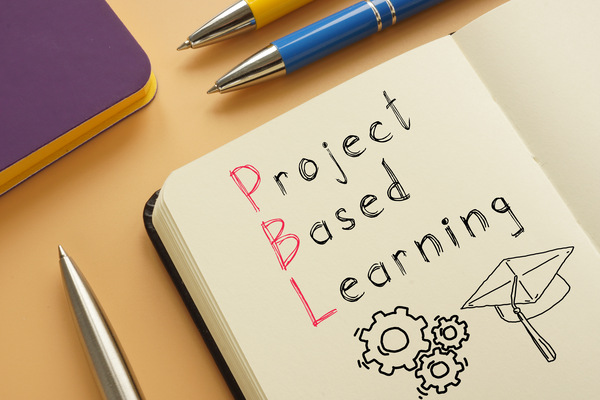Benefits of Art Therapy and Techniques for Working with Children
In recent years, preschool educational system trying to introduce progressive innovative methods of improving the health of children. It allows to effectively perform the tasks that are facing the teaching staff today. One of the most popular areas is the art therapy technique.
Art therapy is one of the most effective methods of psychotherapy, which involves creativity and various artistic techniques. Correction with art therapy is the gentlest and productive. It allows to solve various problems, ranging from the problems of social adaptation and ending with the development of children’s potential. The leading goal of art therapy is to master the process of self-knowledge in a child and develop his ability to express himself.
Types of Art Therapy
Isotherapy. A productive type of therapy with the introduction of all kinds of art means: modeling, application, drawing. During the drawing therapy, classes are conducted aimed at improving perception and children’s imagination. Creativity helps a child to open up while having fun, improve sensually-motor coordination and specifically imaginative thinking;
Bibliotherapy. The main tool is a literary work. It allows to solve the internal problems of the child. Novels, fairy tales, and stories can be used as literary sources. Bibliotherapy helps to overcome psychological problems, including shyness, insecurity;
Music therapy. An effective therapy that helps to improve the health of the child. The teacher selects in advance the appropriate melodies and sounds, with the help of which you can have a positive impact on the psycho-emotional state of the child. In practice, both individual and group music therapy are distinguished. The first is necessary to restore a trusting relationship between the teacher and the child, the second for the development of communication skills with other children;
Kinesitherapy. Modern therapy, which includes choreotherapy, dance therapy, corrective rhythm. In this case, the child moves as he wants, without subordinating all actions to the coach. Dancing helps children to throw out all the negative energy and get a lot of positive emotions.
The most effective methods of art therapy also include phototherapy, color therapy, play therapy and sand therapy. All of them help to overcome feelings of rejection and allow you to increase self-esteem in your own eyes.
Art therapy methods
Active. In this case, the whole procedure is aimed at designing a new creative composition. The child learns to embody his own creation into reality without evaluating quality and beauty;
Passive. The main purpose of this technique is the use of pre-prepared types of art, for example, listening to a musical composition, watching exciting videos;
Mixed. The child uses the available artwork to design their own personal creativity products.
The use of art therapy is the most productive way of social adaptation. Its introduction into the field of preschool education allows children to take full part in the life of society, develop creativity of thinking and integrity of the personality.
Art therapy in working with children
The main task of modern art therapy technique is the transition from negative experiences to positive emotions. Progressive methods used in preschool educational institutions make it possible to reveal the child’s inner potential and maximize his efficiency.
The main means of art therapy are various materials that are used in art: pencils, markers, pens, 3D pens, paper, brushes, coloring pages, 3D printers, video materials, melodic music and much more. The increasing popularity among children and adolescents is acquired by 3D devices that allow you to create three-dimensional objects. They help children develop their own imagination and volumetric thinking skills, realize their own dreams and relieve psycho-emotional stress.
Why art therapy is useful
The complex development of a child is based on many factors. This is both the intellectual development of the child and physical exercises (for example, choreography for children). The moral and ethical base, the development of leadership qualities is important. But the framework for everything is a harmonious mental state and a child’s self-confidence. Through creativity, the child not only achieves this inner balance, but also acquires many other useful skills:
- Knows himself, forms the concept of himself as a person, individuality;
- Safely and harmoniously living complex and destructive feelings;
- Learns to express oneself;
- Develops a sense of self-worth, significance;
- Improves academic performance and socialization in the team;
- Learns to look for answers to his questions;
- Develops emotional intelligence, learns to feel their emotions and needs;
- Improves the speed of thinking;
- Develops fine motor skills by working with clay, brush, finger paints.
Five DIY Techniques of Art Therapy
The best results can be achieved in developmental sessions with a psychologist or art therapist, but some of the techniques can be applied at home. To practice children’s art therapy at home, you will need creative supplies: wax crayons, gouache, watercolors, crayons, oil pastels. The more variety of colors and materials you offer your child, the more productive the lessons will be.
Technique “Drawing in a circle”
A circle is a closed shape that is psychologically perceived as safe and reliable. The circle often acts as a container for our experiences, anger, resentment, sadness. At the moment when the child is angry or upset, invite him to throw out all the emotions by coloring the circle drawn on a white sheet. You can draw with any paints, pastels, brushes or even your hands.
Technique “Masks”
The art therapy courses offer classes on masks. In part, they resemble exercises related to acting, but the emphasis here is not on acting and creative self-expression, but on the opportunity to look deep into oneself and explore oneself. Prepare some paper blanks of masks and invite your child to draw one mask as he usually is, and another as he would like to be. Discuss the work.
Technique “I am in the form of an animal”
Working with animal images is very resourceful for both children and adults, so it is often used in art therapy centers. It is better to perform this task in the company, it will be more interesting to discuss the results, but it is possible to carry it out individually with the child. Ask your child to paint himself as an animal, bird, or insect. Discuss the drawing? Ask why he chose this look. What strengths does this animal have that the child would like to have?
Technique “Aquatipia”
In art therapy classes glasses of different sizes are used for this technique, but you can take a plastic bag or file. The main thing is that the surface is flat and clean. Invite your child to choose 2–4 colors that best suit his feelings or mood. Better to use gouache. Then, for several minutes, the child can draw his mood on glass or a file – it is better if it is an abstraction. When the drawing is ready, take a blank sheet of paper and print the drawing on it. Take more and more sheets until the print is completely faded.
Invite your child to look for familiar objects and associations in the resulting images. This technique is often used by art therapists to show children how fast and transient negative experiences are, and how to get rid of them quickly.
Technique “My Planet”
Invite your child to dream up and come up with their own planet. What is she like? What is it called? Who inhabits it? Offer to draw to the child and come up with the story together.
Do you know a child who is interested in art? Explore how they can Doodle for Google.

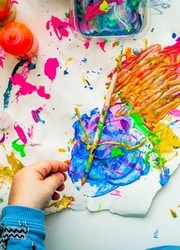
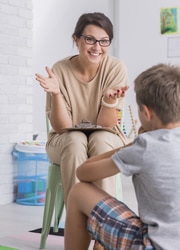
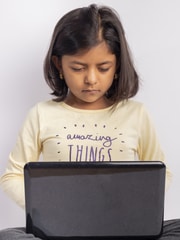
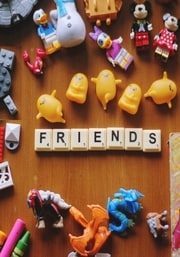
 About Michelle Joe: Michelle Joe is a blogger by choice. She loves to discover the world around her. She likes to share her discoveries, experiences, and express herself through her blogs. You can find her on
About Michelle Joe: Michelle Joe is a blogger by choice. She loves to discover the world around her. She likes to share her discoveries, experiences, and express herself through her blogs. You can find her on 
